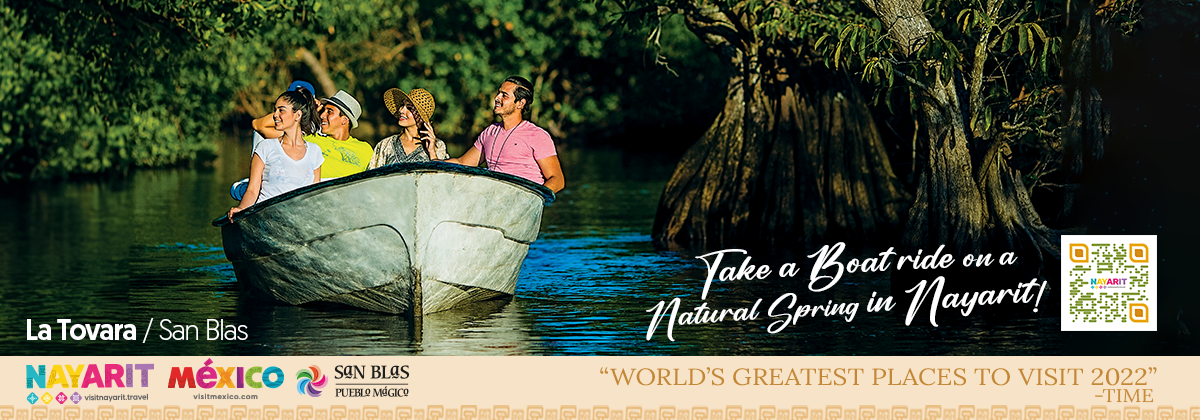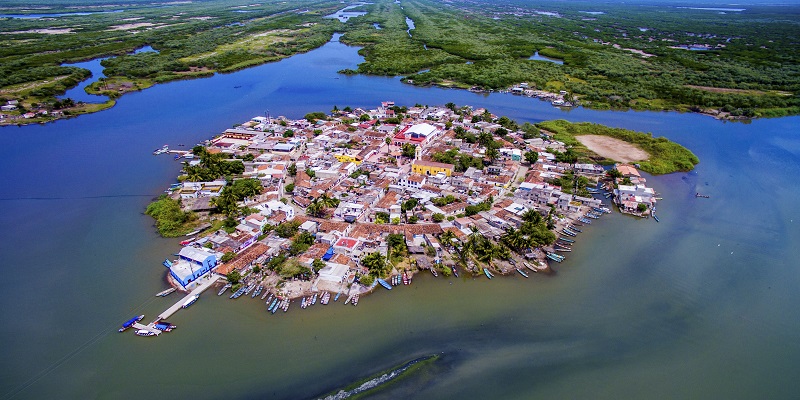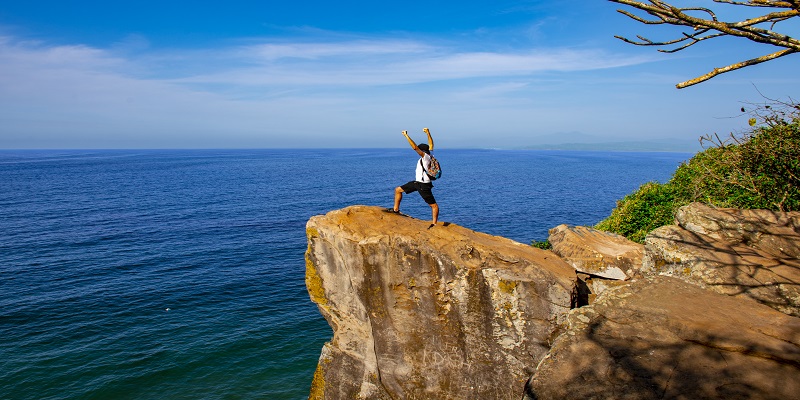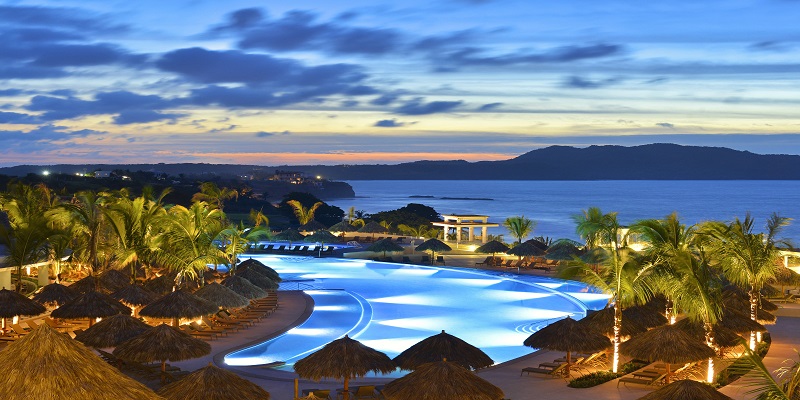Nuevo Nayarit, Nay., Mexico — The State of Nayarit may be most famous for its epic beaches, but a closer look at the region reveals there is so much more to discover. The magic of Mexico can be found all across the state of Nayarit, with its interior at the heart of its beauty. One of Mexico’s Pacific Coast treasures, the state of Nayarit has all the elements that make up a quintessential Mexican experience, and because so much of Nayarit is still off the trodden tourist trail, visitors who venture into the state of Nayarit will find an authenticity and magic that cannot be found elsewhere.
Most travelers have heard of Nayarit’s spectacular coastline. Dubbed “Riviera Nayarit,” this string of beach towns stretches from the Bay of Banderas all the way up the entire state. Beginning with Nuevo Nayarit, the Riviera Nayarit also includes popular hotel and resort destinations like Bucerias, La Cruz de Huanacaxtle, the luxury enclaves of Punta de Mita, the bohemian hotspot of Sayulita, and the smaller, sleepier villages like San Francisco, Lo de Marcos, Guayabitos, and San Blas.
These beach towns are what put Nayarit on the tourist trail, and where you’ll find the majority of the state’s luxury resorts, boutique beachfront hotels, wellness retreats, and all-inclusive. But the state of Nayarit is so much more than just its stunning coastline. It’s also a hot spot for gastronomy tourism, eco-tourism, adventure, and cultural exchange.
As you head away from the beach and into the mountainous, jungle-covered interior of Nayarit, a world waiting to be discovered unfolds. Nayarit is home to thick jungles and looming volcanoes, pockets of indigenous communities, unique cuisine, Magical Towns and diverse wildlife.
The capital of Nayarit is Tepic, a city whose rich legacy can be seen through its architecture, museums, and traditions. Tepic was founded in 1531 as the capital of the Kingdom of New Galicia, a region that was made up of what is now Jalisco, Colima, Nayarit, Aguascalientes, Durango, Sinaloa, and San Luis Potosi. It was a major center for trade, commerce, and European society. A walk around downtown Tepic is like taking a step back in time to its Spanish-influenced past.
A visit to Tepic starts downtown in the Plaza de Armas and its Purisima Concepcion Cathedral, built between 1804 and 1896. You will also find the Cruz del Zacate Temple and the Government Palace, which houses murals from Jose Luis Soto. Museums in Tepic include the Regional Museum of Nayarit, as well as the Juan Escutia House-Museum, located in the 18th-century birthplace of this national Mexican hero — among many other museums dedicated to art, archaeology, history, and beyond.
Visitors to Tepic can also visit former haciendas, like San Cayetano built in the early 18th century, the Bellavista textile factory, the Hacienda de Puga, and the Hacienda de Mora.
Stepping away from Tepic, visitors come face to face with the state’s natural beauty as well as its indigenous cultures. Surrounding Tepic are majestic mountains, which hold many of the state’s secrets, from its adventure and ecotourism offerings to its Magical Towns and native communities. The town of Amatlán de Cañas, for example, feels paused in time. Surrounded by mountains and sliced by rocky canyons, this town is known for its historic temples and its many hot springs spas, as well as three beautiful waterfalls. Another attraction near Tepic is the Los Toriles archaeological site, home to 93 historic structures, including a pyramid dedicated to the Aztec god, Quetzalcoatl.
For culture seekers, Nayarit has four very distinct and special Magical Towns. This includes the world-renowned bohemian beach community of Sayulita, as well as the towns of Compostela, Jala, and Mexcaltitán.
Compostela is a rich epicenter of coffee culture and a visit here means getting up close and personal with some of Mexico’s finest coffee. Visitors interested in learning about coffee culture can also combine a visit to Compostela with jungle activities like rafting, cycling, and hiking.
Travelers who want to learn more about the indigenous communities of Nayarit can head to the Sierra del Nayar, a region of Nayarit characterized by mountain ranges, jungle, and native communities who have kept their traditions and customs alive. The groups that settled in the Sierra del Nayar are the Coras, Huicholes, Tepehuanos, and Mexicaneros.
A visit to the community of El Nayar is the best place to learn about these communities. The main ethnic groups here are the Cora and Huichol and their Holy Week has been designated an Intangible World Heritage by UNESCO. The event features men painted in body paint from head to toe, fighting ritual battles with wooden swords, dances, feasting, and much more.
For wildlife lovers, a visit to Tepic can end back at the coast in the beach village of San Blas. Characterized by its mangroves and protected areas, San Blas has been a haven for birdwatching for decades. It’s one of Nayarit’s best examples of sustainable tourism, with eco-conscious hotels and activities at its focus, thus creating a rich and abundant community of wildlife.
How to get to Nayarit
Visitors to Nayarit can fly into the Bay of Bandera’s airport (PVR) and drive up the coastline. For interior visits to Nayarit, travelers can fly into Tepic. Earlier this year, Aeromexico launched its first route between Mexico City and Tepic.




